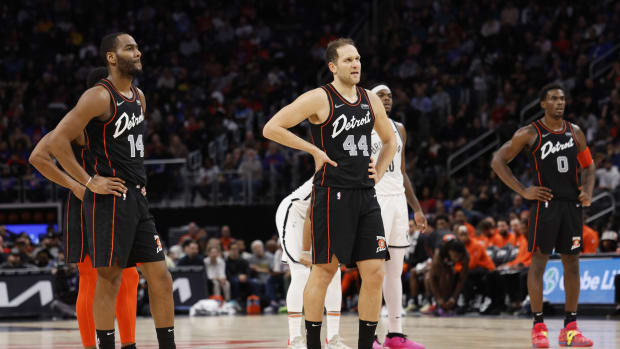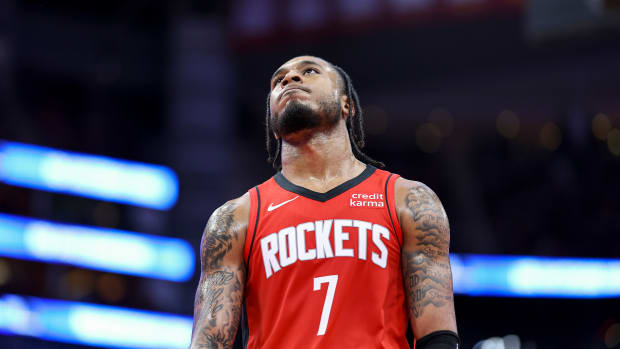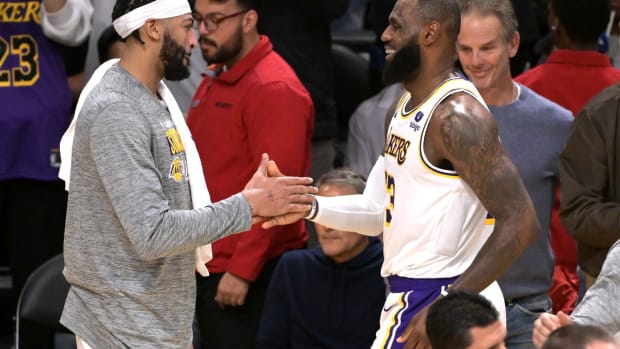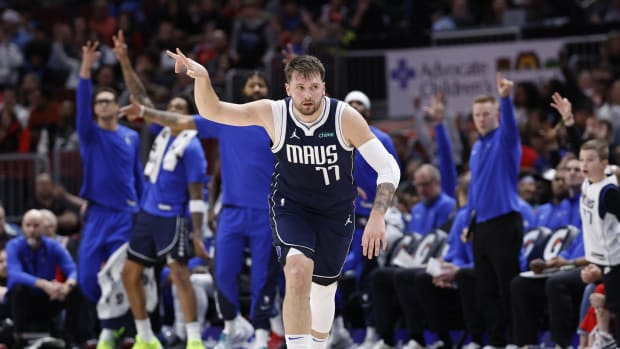Jayson Tatum Will Decide How Far the Celtics Can Go
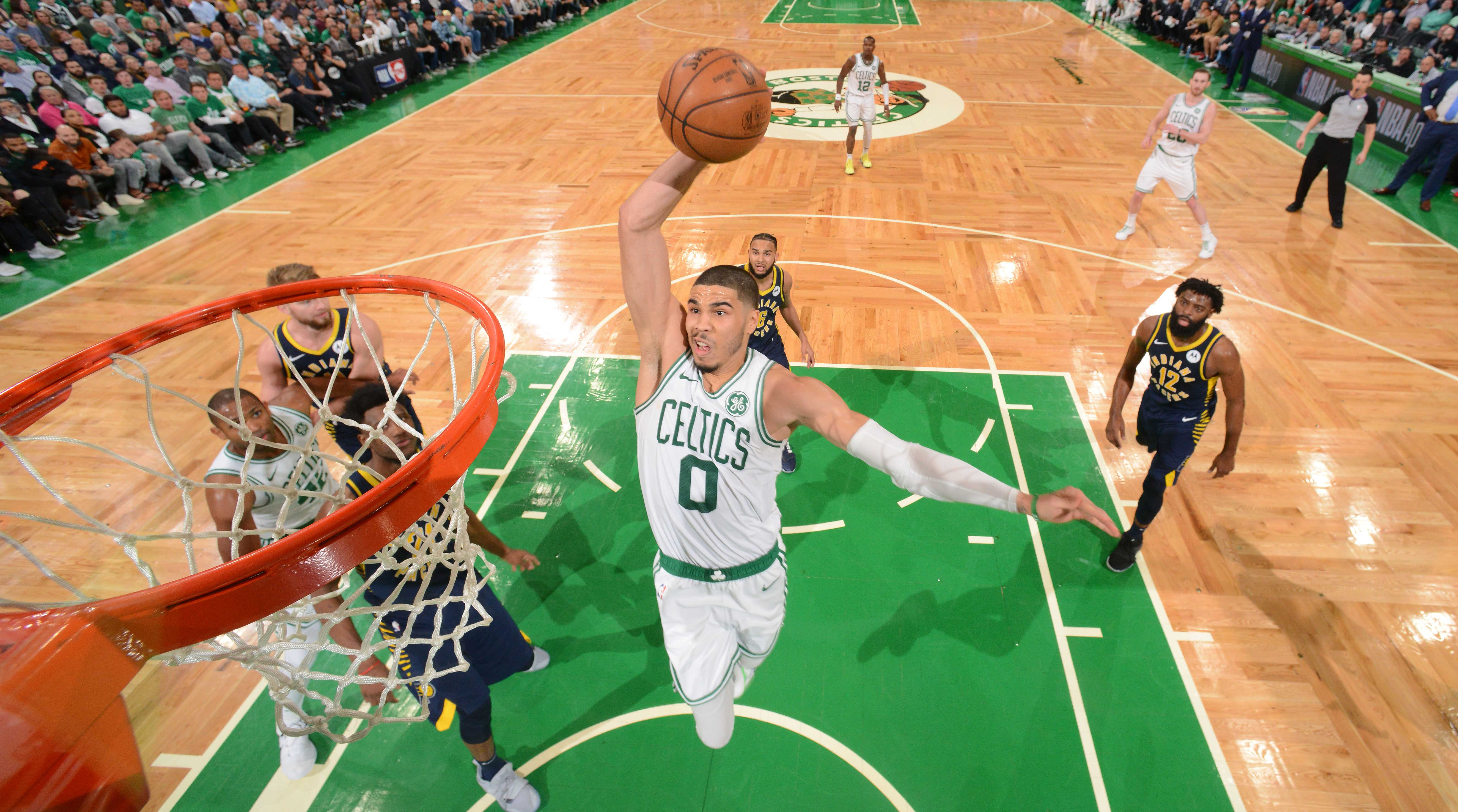
When the Celtics are struggling, they can look so ordinary that it's genuinely shocking. That's what we saw in the third quarter of Game 2 against the Pacers. Marcus Morris was bricking pull-ups, Gordon Hayward was finishing drives with meek fadeaways, Al Horford looked 45 years old, Kyrie Irving's isolation scoring wasn't enough, and Terry Rozier was hurting more than he was helping. In general, the third quarter Wednesday night was one of those now-familiar stretches where the answer to "What happened to the Celtics?" begins to seem like, "Maybe they were never that good."
When the fourth quarter began, things changed. Horford sparked a run with four quick points (his first all night) before switching all over the floor and helping smother the Pacers on defense—Indiana didn't make a single shot inside the three-point line over the final 12 minutes. Kyrie, meanwhile, continued to do Kyrie things. He got whatever he wanted against the Pacers defense, destroying Indiana on switches, and finishing with 37 points on the night. An 11-point deficit at the end of the third quarter became an 8-point Boston win by the buzzer. The finish was a reminder of why the Celtics might still be dangerous after a season full of false starts and empty hype.
But if last night's game was both sides of the Boston coin and everything that makes this team so confounding, it's telling that it was neither Horford's defense nor Kyrie's offense that actually put the Celtics over the top. The difference was Jayson Tatum. With the Pacers swarming Irving in the final minutes, it was Tatum who buried a monster three in the final minute to give Boston the lead. Then, 30 seconds later, it was Tatum who passed up a contested three to drive the lane, draw help defenders, and then find Gordon Hayward wide-open down low for a game-sealing layup.
Tatum is the one who will decide how far this Celtics team can actually go. Kyrie isn't dominant enough on a nightly basis to carry this offense on his own, and Horford isn't explosive enough to provide the kind of firepower that makes Boston dangerous. Hayward has his moments, and I'm sure Jaylen Brown will have a handful of huge games in the next few weeks, but Tatum is a better shooter than Brown and a better finisher than Hayward. He's the wing this team needs more than anyone else. The Celtics only look like the team they are supposed to be when Tatum is playing like the future star everyone thinks he is.
It's been a complicated two years for Tatum. As a rookie, he entered the league drawing hand-wringy comparisons to Rudy Gay before exploding onto the scene and exceeding all reasonable expectations in Year One. He averaged 13.9 PPG and 5.0 RPG, shooting 47.5% from the floor and 43.4% from three-point range, and he was dominant for various stretches of Boston's conference finals run. Celtics fans emerged from last year talking about Tatum like he was a future MVP candidate—and certainly untouchable in trade talks.
In Year Two, after a summer of workouts with Kobe Bryant that were mentioned on every single Celtics broadcast for the first two months of the season, Tatum has regressed in some key areas. His three-point shooting is down (37.5%) and his shot selection has changed. After taking 32% of his shots at the rim as a rookie, that number dropped to 26% this season. While he still puts up a healthy number of attempts from three—30% of his overall shots—despite the dip in his accuracy, a lot of Tatum's shots at the rim have become pull-ups, and he's now taking 43.9% of his shots in the midrange. Most of those shots are contested, too, and he's hitting them less often than he did as a rookie (42% to 34.9%).
This was a season in which an MVP trajectory began to look a little bit far-fetched, and a Rudy Gay trajectory began to get uncomfortably realistic. Tatum isn't exceptionally explosive as an athlete, his handle can look suspect at times, and if his threes aren't falling, his game begins to look like a highlight reel of contested pull-ups that don't really fit in the modern NBA. He's no longer considered untouchable in trade talks after this season, either. In fact, most around the NBA expect the Celtics to offer him for Anthony Davis in July. Tatum, himself, reportedly said, "Yeah, I'd trade me for Anthony Davis, too."
The question is whether anything that happens over the next few weeks might change the way we think about this story. Tatum is still really good. If not quite an MVP-in-waiting, he could definitely be a perennial top-15 player along the lines of Paul George. For all the gripes about midrange jumpers, it’s encouraging that he can create clean looks for himself in the halfcourt, a skill that becomes twice as valuable in a playoff setting. He can also guard multiple positions, and he can hit threes. He had 26 points against the Pacers on Wednesday after 15 points in Game 1, and after shooting 35% from three after the All-Star Break, he might be due to bounce back at the perfect time.
One of the craziest things about the NBA playoffs is how much reputations can change based on a handful of random-seeming events. If Tatum had missed his three in the final minute, for instance, maybe the Celtics never retake the lead and Indiana wins Game 2. In that case, every conversation today probably focuses on another relapse for a perpetually disappointing Celtics team—not the return of Kyrie Irving and the team everyone was expecting.
Those narrative stakes are ridiculous, but they're also what makes playoff basketball so addictive in the first place. And with that in mind, now we can all wait and see where the story goes for Tatum. His season has been frustrating, his future is uncertain, and after seven months of uneven results, this playoff run could render all the criticism irrelevant.
Horford has to stay healthy and Kyrie has to stay dominant, but in the end, it’s only right that neither one of them can complete the puzzle in Boston. No one personifies this team better than the 21-year-old who keeps everyone guessing.































